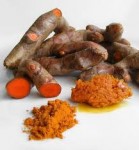 Read an article today online regarding the health benefits of turmeric and it reminded me of an article I once wrote about turmeric tea. I have been aware of turmeric tea for quite some time. It is very popular in certain parts of Japan where it is regularly brewed and served though it is a little difficult to find here in Australia, even online!
Studies cited in the article mentioned that elderly people in India have a far less chance of developing Alzheimer’s disease because of the active ingredient, curcumin, present in turmeric. Indian Ayurvedic medicines often use turmeric in the preparations they make, where it is reputed to not only be beneficial for those suffering from Alzheimer’s disease but it is also used as an anti-inflammatory agent, and it is said to be helpful as an anti-depressant and alleviates anxiety as well. There are some cautions when it comes to turmeric though: drinking excessive amounts of turmeric tea is not recommended for anyone with liver problems, circulatory problems or those taking blood thinning medication.
As mentioned above, people from Okinawa, Japan have been apparently imbibing turmeric tea for centuries. While it is readily available in Japan, it can be difficult to find here (though there are quite a few capsules and supplements available.) Not to worry, you can actually make tea using the dried turmeric you buy from the spice section of the supermarket.
Here are some different recipes that I have tried:
Measure 1 teaspoon of ground turmeric into three cups of water. Simmer gently for 7-10 minutes and it’s ready to drink. You may want to add a little honey and even a squeeze of lemon to make it more palatable. You can also make a tea using milk instead of water, although in this case you should heat up the milk gently, making sure it does not actually boil. Make a paste out of turmeric and honey – this can be kept in the fridge for a few days without spoiling. Use 1/3 cup of honey and 3 teaspoons of dried turmeric powder. Then, when you want a cup of turmeric tea just put a teaspoon of the mixture into a cup and pour boiling water onto it. If you are prepared to spend a bit more time on your tea you can actually buy fresh turmeric root, grate it and use that
Continue reading Turmeric Tea, Anyone?
Rooibos Flowering Plant — Native to South Africa
Rooibos (pronounced roy-boss) is a broom like flowering plant which is found growing in South Africa.
For generations, those living in South Africa have made a tea is from the thin, needle like leaves of the plant. While its introduction to the rest of the world is fairly recent, for years in South Africa the tea was used to treat a variety of ailments ranging from colic and respiratory problems to skin problems.
The tea is prepared from the leaves in a very similar manner to how regular tea is processed – giving the final product a reddish color. Unoxidised Rooibos leaves produce a “Green Rooibos” however the most common tea exported is the reddish, oxidised Rooibos. Higher grade Rooibos teas, those with a higher leaf to stem proportion, are usually what are exported.
Natural Rooibos Tea
Today you will find a wide range of Rooibos teas available, ranging from the standard Rooibos tea to flavoured Rooibos teas. It can be served with milk, sugar or honey may be added. Some prefer it without any milk – preparation often depends on what additives accompany the Rooibos and whether milk would blend well with the overall flavour. You can also find Rooibos iced teas on many supermarket shelves. Lemon slices are a nice accompaniment to black Rooibos.
Studies from South Africa as well as other locations worldwide have shown that, similarly to green and oolong teas, there are high levels of antioxidants in Rooibos tea. It is caffeine free and has very low tannin levels. Because of this it is easy to see why it is becoming a healthy alternative as a hot beverage. Flavonoid compounds also found in the tea are said to help steady the nerves.
Who Should Drink Rooibos Tea?
Rooibos tea should be considered by anyone concerned about health and nutrition. It is safe for children, pregnant and nursing mums to consume – so is ideal in situations where caffeinated drinks are not recommended.
What Does it Taste Like?
Rooibos tea is a full-bodied tea, with some suggestions of it having an earthy or slightly nutty flavour. Some teas may be considered an acquired taste (Pu-erh tea, in my case) and it seems that Rooibos is a little similar. In other words, some people fall in love with the taste immediately while others take
Continue reading Rooibos Tea Secrets
Standard 900ml Teapot and Warmer
They Look Great! They Keep Tea Warm They are Easy to Clean Perfect for Displaying Tea Visual Guide to Brewed Tea
Not only do I sell glass tea ware but I also regularly use it at home, often in preference to using other teapots. Yes, you do have to be somewhat careful with glass teapots — like any glassware it will break if dropped (then again, so will a ceramic teapot). The other day, when asked what type of tea pot I used at home, without hesitation I answered, “a glass teapot.” When asked why, I could not immediately answer–perhaps it is simply because it’s sitting there on my kitchen bench ready to use? No, that wasn’t the reason, there are plenty of tea pots hanging around begging to be used.
Any given time you walk into my kitchen you will find quite a collection of teapots sitting around on benches, kitchen shelves and on the shelf above my sink–and that’s not counting the numerous other teapots patiently waiting their turn to be used in various kitchen cupboards. There are Ipots, clay Yixing teapots, stainless steel teapots (not many of those, though) and a Handybrew aside from an assortment of glass tea pots. Overall, in order of use, we probably use glass teapots the most. Next would be the Handybrew, then Yixing or other small, Chinese clay teapots.
1) They Look Great: Even as a decorative item, glass tea ware looks beautiful. Whether sparkling in sunlight streaming through a window, or reflecting soft candlelight glass ware is eye-catching. It looks crisp, clean and begs you to use it. I know some of my customers buy glass teapots purely to display.
glass candle warmer
2) Keeps Tea Warm: Paired with a glass candle warmer, they will keep tea warm for at least an hour. If you are brewing tea for several people and intend on offering top-ups, a glass teapot sitting on top of a lit candle tea warmer will definitely keep tea drinkably warm for long enough to finish all your tea. At our market stall we prepare a blooming tea in a tall Jewel teapot and set it on a lit warmer. It is still very warm to the touch even a couple of hours later, although the tea may be a bit
Continue reading 5 Reasons I Use Glass Teapots
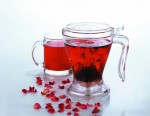
I am a great fan of this Taiwanese patented, award winning tea maker, we use it all the time at home.
Using the Direct Immersion Brewing Method, (think in terms of French Press coffee), it produces really high quality tea or coffee. And it is very simple to use. For a quick demo, please go here.
It is 500ml, which is plenty for one mug of tea or coffee or for two smaller mugs or cups.
For US customers the Handy Brew Tea Maker is available from our affiliate HERE
What I Like About This Product
There is a lot that I like about the Handy Brew. The design is fantastic. From speaking with the person who trademarked this brewer I know that a lot of trial and error went into perfecting it, with their ultimate goal being that it would simply be the best — it is. It is patented in quite a few different countries in an effort to keep “copies” off the market — mainly because it is so well designed and they do not want their reputation to suffer as a result of inferior copy products being made. Knowing all that went into the actual patented design, I am confident that it is simply one of the best on the market. Along with the design, the material it is made from is very high quality BPA free plastic. It is sturdy and heat resistant.
It is also very versatile. You can use it for either brewing coffee or for steeping loose leaf tea. I have used it for both. If brewing coffee I’d suggest using a fairly coarsely ground coffee for best results. Really though, it does produce a great cup of coffee providing you let it brew for about five to six minutes before pouring. It also brews a perfect cup of tea, no different than brewing tea in a glass teapot with infuser for example. I use it at home, but we have also used it at the office mainly because it really is a ‘no mess’ way to make a great cup of tea. It is not insulated, of course, so it does not work like a portable tea infuser as such (one that keeps tea hot once made).
The ease of use is also another plus with this item. The handle is designed for a very easy grip. The top opens up easily
Continue reading Handy Brew Tea and Coffee Maker – So Simple to Use
 I know I have.
How do you “nitrodize” (made up word, please note) rather than oxidize tea leaves. After a little research I finally discovered just how it’s done.
As mentioned in a previous article on GABA tea, it was discovered more than 20 years ago when Japanese scientists were experimenting with ways to better preserve food–presumably with the use of nitrogen. Surprisingly, when tea leaves were exposed to nitrogen, GABA levels rose enormously.
I will not reiterate the amazing benefits of GABA here, as I have already done so in previous articles. Let’s just say it’s REALLY good for you, it occurs naturally in the human body and has great anti-stress properties. It also lowers blood pressure and improves the clarity of your mental processes. It is also becoming the beverage of choice the morning after as a Hangover cure and support to hangover recovery.
Buy Organic GABA Oolong tea Online here
Here’s How It’s Made
The tea leaves are harvested normally. The GABA tea we sell is made from Alishan Jinxuan Oolong tea. I have read that it can also be made from green tea and presumably from any type of tea–which will, no doubt, slightly alter the taste of the tea. I have not yet experimented with GABA made from different types of tea, but I presume the type of tea used would affect the actual taste of the tea as each tea has subtle (or sometimes not so subtle) flavour and aroma differences. Most sources agree that using higher grade tea is best as there are naturally higher levels of glutamic acid–the base ingredient that GABA is formed from–in better quality tea.
Also, tea grown at higher elevations benefits from warm days and cool nights — again something that is supposed to enhance natural glutamic acid levels in tea leaves.
The tea is shaded prior to being picked, which apparently increases glutamic acid levels even further. Once the leaves are picked they are placed in vacuumed drums, all oxygen is removed and is replaced with nitrogen. The length of time the leaves are exposed to nitrogen is a fairly well kept secret–though probably somewhere around 8 hours or so. After that, the tea is processed as normal.
GABA tea is enjoying quite a bit of popularity now. Some of the best GABA teas, in my opinion, are made in Taiwan where the Taiwanese produce it
Continue reading Ever Wondered How GABA Tea is Actually Made?
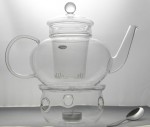 Took some time over the last few days to set up my mini “home photo studio” — well, it’s really just a 60cm cube, lighting, backdrops and a stand for my camera but it will hopefully make it much easier to photograph new items as they are stocked, including new teas and tea ware, and “Fairy Flowers Spreading” flowering tea pictured here to the left.
I used to find it very difficult to successfully photograph glass ware, however now with my new setup, after spending hours reading up on how to properly photograph glass and having spent as many hours (or more) experimenting, I am now happy with how my photos are coming out. I am certainly not a professional photographer. In fact, I am not even an amateur or hobby photographer. But at least I think the glass tea ware photos look fine. They do not have large areas of glare or reflected light and you can fairly clearly see not only the shape of the tea pot but also the infuser unit inside.
One key was getting the lighting right. I tried photographing some tea pots in the cube with a white and a dark blue background but the reflection of the cube was clearly seen in the tea pots — looked like they were filled with white fluffy balloons… Others had large areas of glare reflecting off, or yours truly with camera shining right back at me!
Finally, the combination I settled with was to set up the cube behind the item with one of the lights sitting inside the cube, shining through the wall onto the item through a double white layer. I placed a white sheet on a glass table, lit from underneath, and a grey gradient sheet of paper on top of that. Using a tripod made all the difference — I manually set the aperture as wide as possible and the result was photos that I am at least not embarrassed with 🙂
I have added a few more glass tea ware products to my online store — please feel free to check out what is available here. If you have any questions regarding the teapots just drop me a note via email or add to the comments section, and I’ll get back to you as soon as I can.
Happy tea
Continue reading Flowering Tea Photo
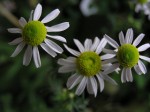 Chamomile tea is well known as a herbal tea that is very beneficial to drink prior to heading off to bed at night — as an aid to gaining a restful night’s sleep. Aside from that one property, there are actually quite a few other benefits gained from regularly drinking Chamomile tea, some of which are less well known than others.
Chamomile Flower
Photo By: Lorelei-Ranveig
While there are two main types of Chamomile plant, the main type used to make Chamomile tea is the German Chamomile. German Chamomile is an annual plant which needs to be re-planted each year. The other kind, Roman Chamomile, is a perennial plant and while it is sometimes used for tea it is also often used to make other herbal aids. Fortunately, for those who enjoy growing their own herbs and plants, both types of chamomile are easy to grow though the fact that Roman Chamomile is a perennial plant often makes it the one chosen. Both plants have beneficial properties though I have heard that many herbalists feel the German variety is more potent. Our Chamomile tea is made from the German Chamomile plant.
Harvesting and Drying the Flowers
Tea is made from the whole Chamomile flowers, which are clipped off the plant once they are in full bloom. Do not use the stems or leaves from the plant–just the flowers. The flowers are actually quite easy to use your fingers as a “rake”, pulling them through the plant to harvest the flowers. While you can use the flowers as soon as they are harvested, most people opt to dry the flowers so they can be used all year round. Most of the teas you buy are made using dried Chamomile flowers.
Air drying the flowers works quite well. Simply lay them outside on clean screens till they are dried–no need to wash the flowers first as it’s unlikely that there would be any dirt on th em. Of course, watch out for any summer rain storms! Once they are dry, store them in an air tight container, small Mason jars work well. Most recommend storing herbs for a year only.
Making Chamomile Tea
Chamomile tea is relatively easy to make. If using fresh flowers the ratio is one cup of flowers to a pint of water. Most people find using dried chamomile is more convenient. For dried chamomile, two
Continue reading Chamomile Tea and Its Health Benefits
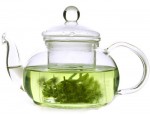 One of the things I enjoy the most about having a stall at the market is being able to talk and interact with my customers. On average, only about one in every twenty people visiting my stall are knowledgeable about loose leaf teas, so consequently I end up fielding a lot of questions about teas in general and about the tea ware I sell. I enjoy the opportunity of talking with customers, explaining the differences between tea types and showing them how to properly brew tea and I love answering the myriad of questions I am asked.
I hear many of the same questions over again so I am listing the more common questions I am asked about our glass teapots and glass candle warmers along with the answer I usually give below. If you have any questions about glass tea ware that is not answered below, please feel free to drop me a line or add a comment below the post and I’ll do my best to answer.
Glass Teapots
“Are they glass or plastic?” “They are made from glass.” (Often, at this point, the person will give the tea pot a little flick with their finger, or tap it with their fingernail, to verify my statement.) “In fact, they’re made from a glass that is similar in properties to Pyrex. It’s called borosilicate glass and is designed specifically to be able to withstand high temperatures. It is the same type of glass that is used for laboratory glassware.”
“What’s that thing inside (infuser unit) for?” I take off the lid and lift the infuser unit out to show them. “It’s the infuser unit. That’s where you put the loose leaf tea, see it has small slits in the bottom so the water can infuse the tea leaves. Once you have brewed your tea you can actually take the infuser unit out and set it aside if you like. Or, if you are going to pour all the tea you can leave it in the teapot — it keeps the tea leaves from ending up in your cup, or getting stuck in the spout.”
“How much tea do you put in the infuser?” “That depends on how much tea you are making, and which teapot you are using. For the smaller 600ml teapots, usually one teaspoon of most teas is sufficient. For the 800ml teapot you may want to put
Continue reading Common Questions about Glass Teapots and Glass Candle Warmers
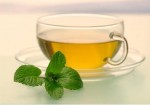 I’m happy to let you know that I now have a selection of flavoured teas available for purchasing online. We have a selection of teas made with a black tea base, and one tea with a green tea base. The teas are:
Cinnamon Black Tea Apple Black Tea Vanilla Black Tea Mint Green Tea
My two particular favourites (though I enjoy them all) are the Cinnamon Black tea and the Mint Green tea.
Cinnamon Black Tea: I personally enjoy the cinnamon flavour mixed with black tea. It is a warm mix of a spicy-sweet tea that is perfect for drinking when you feel like you need a bit of a lift. The cinnamon flavour is not too over-whelming, and the tea lends itself well to adding a little milk (or cream) if you like. A perfect after-dinner accompaniment to dessert. While some cinnamon tea blends can be a little over-powering, particularly if you’re not that fond of the spicy aromatic cinnamon taste, the cinnamon flavour in this tea is not strong. For an interesting combination, try blending it with the Apple Black tea — YUM.
Mint Green Tea: I love mint and I love herbal mint teas — and I love mint green tea. I do not drink a lot of green tea myself (I am more of an oolong tea drinker) however I found this combination great. The light taste of the green tea contrasts well with the cooling sensation of the mint. It is also a great after-dinner tea, mainly as it is a great palate cleanser, refreshing to drink after a heavy meal and it also aids in digestion. I would not suggest adding milk to this tea — but a dab of honey or a touch of sugar is fine. For a great mix, try brewing a strong mint green tea, cool it down with ice-cubes, add a touch of fresh lemon juice and enjoy on a hot day.
Apple Black Tea: The fresh apple flavour coupled with fresh black tea makes for a great combination also. Try varying your infusion times to get a different tasting tea. The apple flavour adds natural sweetness to the tea, and the tea itself smells fruity and earthy. It has more of a black tea taste than an actual apple taste — and it can be sweetened with a little honey or sugar if you like. You
Continue reading New Flavoured Teas Now Available
And Other News
As it has been a while since I updated my Blog, I thought it was time to do so. There have been a few new developments with Robyn Lee Tea, but first up I’d like to share our most popular selling products for this month.
Popular Products:
Our most popular selling teas have been:
Buddha’s Tears (aka Jasmine Pearl Tea) GABA Tea Strawberry Green Tea Osmanthus Oolong Tea Flowering Teas
Our most popular items have been:
Premium 800ml Teapot Premium Tea Set (Tea Pot, Candle Warmer and 2 Bodum Glasses Tea Pot and Warmer Candle Warmer
Where You Can Find Us:
For US customers you can order our teas here: Zi Chun Teas Online Shop
You can now find us at various markets and festivals around the Sydney area. We are at Parramatta Market (Church street) most Thursdays and Saturdays. We are also looking into having permanent stalls at other markets in the area. I’ll keep you posted, once we have our regular market plans finalised. We are very excited to be branching out into the world of markets. It’s a great chance for us to interact with you, our customers, it’s a lot of fun and we get to talk with everyone about our passion — tea! We have great plans for our marketing, where we are aiming to not only sell tea and tea ware but to also offer information on tea, its health benefits, brewing methods and more.
If you enjoy taking your chance bidding on tea ware, you can also find items on sale on eBay — look for the seller robynleetea.
Adding New Teas:
We are in the process of adding more varieties to our selected teas available. Soon we will have English Breakfast, Earl Grey Tea, Blended Fruit teas, and Fruit teas — hopefully they will be in stock within a week or so. As our flowering teas have also been top sellers we’re getting in more varieties to choose from.
Plans for Tea Ware:
We are also looking into selling more tea ware — specifically different types and sizes of tea pots. For this upcoming Christmas gift season we will also be making gift sets available — ranging from the high end Lin Family Ceramics to beautifully packaged glass tea sets. These have already been popular items and we are sure, once they are specifically gift packaged, they will be even more in
Continue reading Buddha’s Tears Tea Top Selling Favourite
Rose Oolong Tea
I’m excited to offer a chance at buying some incredibly great teas at discounted prices, in celebration of Spring! For my spring selection, I chose one green tea, one oolong tea and one black tea, including two spring flavoured teas!
The Rose Oolong tea is a delightfully scented, and high-quality oolong tea with a subtle rose scent. In fact, you can see some of the tiny rose petals still in evidence amongst the tea leaves. Normally, this sells for a minimum of $15.99 per 100gm. With this tea, tiny rose petals are added to premium hand-picked Jin Xuan oolong tea, making for a terrific blended tea. Choosing the right snacks or food to go along with a specific tea is as much of an art as wine and food pairing. Try eating some stronger, hard cheese and crackers with your Rose Oolong, or serve along with a chicken or turkey meal.
Jasmine Green Tea
Jasmine Green tea, a favourite amongst many tea-drinkers, is another of my Spring choices. The scent of jasmine always reminds me of spring and this tea hasa sweet and fragrant scent to it. The brewed tea should also have a faint jasmine aroma. Green teas generally pair well with salads and also with seafoods. Of course, this particular tea is great for drinking on its own.
Black teas are often traditionally people’s first choice of breakfast tea. High quality Keemun black tea, which normally retails at around $22 per 100gm, is no exception. This tea is a great breakfast choice as it has a very subtle chocolate flavour, albeit without the sweetness that is normally associated with chocolate. This makes it an ideal beverage to end your breakfast with or to accompany a pancake breakfast, for example. It also pairs well with curry dishes or other spicy foods such as Mexican, Thai or Chinese foods.
Keemun Black Tea
I hope you enjoy the three choices I have prepared for my “Spring Special”. If you are new to drinking loose leaf tea, these three choices will give you the ideal opportunity to explore the difference in taste between green, oolong and black tea. For seasoned tea drinkers, you will hopefully enjoy the freshness of these different types of teas and enjoy experimenting with drinking them at different times and pairing with different snacks and meals.
Hopefully, soon
Continue reading “Spring Special” Three Amazing Tea Choices at Discount Prices
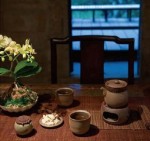 History of Lin Ceramics
Starting out small, at the advent of the 1980’s tea culture revival in Taiwan, Lin’s Ceramics was established in 1983. What made their brand of tea ware stand out from many others was their belief that in order to establish high quality tea ware it was necessary to utilize their cultural knowledge and understanding of all aspects of the tea culture, in designing simple daily utensils with specific types of tea in mind. The result; an absolutely breathtaking selection of some of the finest and highest quality Chinese tea ware available.
From their initial single pot design, they branched out into complete tea sets and a comprehensive range of tea accessories. Early Lin Ceramics, pioneered by founder, Lin Guorong are clearly differentiated from tea ware made in the early 2000’s, by the signatures impressed into each piece of tea ware. By the mid 2000’s, it is estimated that over 80% of tea houses in Taiwan were using Lin tea ware. Today, they have stores throughout mainland China and Taiwan.
What has made Lin Ceramics so popular? Creative and artistic design, practicality, a deep knowledge of tea and best brewing practices and a desire to make tea ware that can be easily integrated into everyday lives, both at home and at the office. They suggest using different types of tea ware for preparing and drinking different types of teas – this, along with the extremely creative, beautiful design, has made their tea ware some of the most sought after, high-end products of this type currently available.
Quality of Lin Ceramic Tea Ware
Aside from the professional design, the actual quality of this tea ware is definitely a cut above much of the other Chinese tea sets and tea ware currently available. All of the clay and other materials used in making the tea ware are of very high grade. The clay is mixed carefully and each piece is individually shaped by one of the many talented craftspeople in their employ. While much of the cheaper teaware available on the market today is mass-produced, each piece made by Lin Ceramics can be thought of as a piece of art more than merely a tea cup. Once the piece is shaped, natural mineral or plant glazes are applied. Great care is then taken with the next stage – firing the products, sometimes up to three times in order
Continue reading Lin Ceramics – High Quality Chinese Tea Sets and Other Chinese Tea Ware
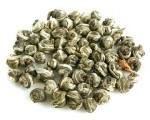 Our Jasmine Pearls tea comes directly from China, where it is harvested at Fu Ding in the Fujian province. We offer two varieties of Jasmine Pearl tea: Jasmine Pearl in a white tea base and Jasmine Pearl in a green tea base. As with regular teas, the Buddha’s tears tea with the white tea base is quite a bit more expensive than that with the green tea base. Currently we have the Jasmine Pearl tea in a green tea base in stock. This is the tea I am featuring today.
Order Jasmine Pearl from our online shop here
For US and Canada customers teas can be ordered here: Zi Chun Teas Online Shop
This tea is known by quite a few different names, here is a list of what you may see it called – rest assured, no matter what name is used, the tea should be the same type of tea—though some may be made with white tea, others with green tea.
Jasmine Pearl Tea Buddha’s Tears Tea Jasmine Dragon Pearl Tea Jasmine Dragon Pearls Dragon Tears Tea Jasmine Pearl Green Tea
Jasmine Pearl Tea in Green Tea Base
Rolled Jasmine Tea Balls — Tear Shaped ‘Buddha’s Tears’
The tea we stock is grown at a fairly high elevation of 1,200 metres. Basically, it consists of spring harvested green tea leaves that are hand rolled into tight balls resembling pearls (or Buddha’s tears). Once the balls are made, they are left to dry until the Jasmine flowers are in bloom. The tea, which remains rolled into a ball shape, is then scented five to six times with Jasmine flower petals. It is a natural tea, made from freshly harvested tea and jasmine petals.
I am often asked about the concept of scented teas – how the process is accomplished and how natural it is. In essence it is an extremely easy step. You may have heard, or read elsewhere, how important it is to keep your teas sealed well and set away from other food substances such as coffee, herbs and other aromatic food stuff. The reason for doing so is that tea very easily and naturally absorbs odours. Flower petals are very fragrant (as are many herbs and spices used to scent tea – think of the peppermint or ginseng scented teas). Mixing odour absorbing tea and fragrant flower petals is the perfect way to come
Continue reading Jasmine Pearl (Buddha’s Tears) Teas
First of all, what exactly is a Yixing Tea Pot? It is a clay teapot made with clay originally from the Eastern province of Yixing in China. During the mid 1500’s a monk from the region began hand crafting tea pots from this particular clay. Being very elegant and high quality, these became favourites among scholars and other influential people in China and were much sought after. Today, most of the teapots are made in Dingshan — which is part of the Yixing area.
There are several reasons why these teapots are so popular. Many, especially those made hundreds of years ago, are considered national treasures. Hand made teapots are usually more expensive than those that are mass produced using a mould. Other factors determining price include the artist who crafted the teapot, the design, age and the type of clay used. Very much a tea collectors item, they are also very good reasons for choosing a Yixing teapot for brewing especially oolong or black tea.
During the steeping process, amounts of the tea seep into the porous clay so that eventually, with use, a film coats the inside of the teapot which helps to retain both the taste and even the colour of the tea as well. For this reason it is usually recommended that only one type of tea is brewed with each teapot, as eventually it will enhance the flavour of the tea even more. This is why you may well see many small Yixing teapots on display when sharing a cup of tea with a dedicated loose leaf tea drinker.
There are standard types of teapots, such as the one shown at the top of this post, and there are more highly decorative types such as the one you can see to the right of this paragraph. You can also find Yixing drinking cups and other ornamental items — though the tea pot is perhaps the most famous and widely known item made from Yixing clay.
Is Shape Important?
Yes, shape can be an important consideration. The main thing is that the water is able to circulate freely around the tea leaves. For this reason, the cauldron shaped teapot is a favourite and you really won’t go wrong in buying one of this shape.
Other Considerations
You may want to make sure that the lid of the teapot fits snug onto the top of the teapot. Some of
Continue reading Yixing Teapots — Tips on Their Use
 Are you looking for a novel idea for a bridal or baby shower? Or are you part of a group who meet together regularly and occasionally share social occasions together? One idea that is quickly gaining popularity is that of including tea tasting at your social event or party.
Tea Tasting?
Wondering what tea tasting is? After all, don’t all black teas taste pretty much the same? Do green teas actually taste different from oolong teas? (By the way, what is oolong tea?) When thinking of tea tasting, think in terms of wine tasting as it’s a very similar experience.
There is definitely a difference in taste between black, oolong, green and white teas. Learn to tell the difference and become a tea expert. Learn to differentiate between different green teas or different oolong teas and become a tea connoisseur.
Perhaps you and your friends have heard about the benefits of drinking loose leaf teas such as green tea or oolong tea but don’t really know where to start when it comes to selecting the right tea for you. People definitely have personal preferences when it comes to the type of teas they enjoy (my favourite, for example, is oolong tea – High Mountain Oolongs, in fact!) Some people love the more earthy taste of green teas while others prefer the taste of oolong tea. If you are transitioning from drinking black tea, made from off the supermarket shelf teabags with added milk and sugar, there are teas that make the transition much easier.
Love the ease of preparing teas from teabags, but have heard that “real teas” can’t be enjoyed that way? Wrong, there are healthy and delicious options available.
Are you fascinated with the concept of switching to drinking loose leaf teas but don’t know where to begin? How long do you steep them? How do you make them? What is needed to prepare these teas?
All of these concepts, and more, can be explored and explained in a fun way during a tea tasting party. For specific details check out this page.
What Happens at a Tea Tasting Party?
Usually, you need to set aside a minimum of one hour for the tea tasting of Chinese origin teas. To begin, a brief summary is given of the more common types of teas, how they are made and what makes each different from the other.
Then the
Continue reading Tea Tasting Party Options
Just had an opportunity to go through a lot of my older photos and in doing so realised that I had some terrific photos, and memories, of a trip we took to visit some of the high altitude tea growing areas in Taiwan. Taiwan is not on the regular list of ‘places you absolutely must visit’ however it does have some truly amazing sites and places well worth visiting. Remember, in the not too distant past it was called ‘Formosa’ which loosely translated means Beautiful Island. It certainly does live up to that reputation.
Eastern Coast of Taiwan
Enjoying the East Coast Views Taiwan
We started our journey by travelling down the rugged east coast of Taiwan which faces the Pacific Ocean. Rugged cliffs drop directly into the ocean, giving some astounding glimpses of the wildness of the area. There are some areas, such as Hulien, that have beaches though they are often pebble beaches or dark sand beaches. The white beaches are more commonly found towards the south of the island in the sub-tropical areas. Oh, another interesting fact, the northern part of the country is in the temperate region but the lower part is sub-tropical and you notice the change almost immediately as you’re driving south.
There are some great natural hot springs around the Eastern coasts, and many small hotels and facilities are set up with hot spring baths and pools. During our tenure in Taiwan we became totally addicted to hot springs. There is nothing better than relaxing (usually sans clothes) in a 37 degree natural spring water, watching the sun set over gorgeous mountainous settings, while the temperature drops to five or six degrees. It is exhilarating and one of the most relaxing experiences I have ever enjoyed.
Central Taiwan Mountain Ranges
Bridge in Nantao County, Taiwan
From Hualien we travelled west over rugged mountain ranges through the small village of Ren-nai and down to Taichung which is a very mild climate city in central Taiwan. While we were not permitted to visit the higher mountainous areas such as the Yushan area we did stop by the Alishan range — yes you have probably heard of Alishan Mountain tea — an oolong that is actually one of my favourites. We also spent some time in the Nantou area where we stayed at a hotel that naturally had hot spring water piped into
Continue reading Beautiful Taiwan Tea Growing Country
|
About  I hope your journey into the fascinating world of tea is as rewarding for you as it has been for me. I have lived in Asian countries for almost thirty years-spending twenty five in Thailand, and almost five years in Taiwan. I recently relocated to Australia, where I hope to continue to promote and sell Chinese and herbal teas. |











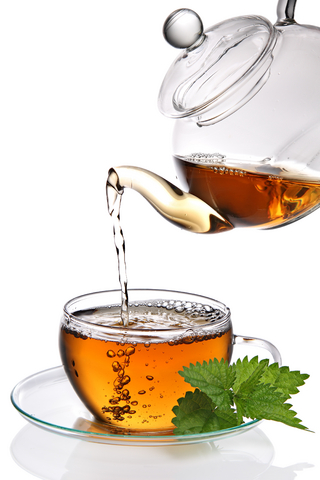
 I hope your journey into the fascinating world of tea is as rewarding for you as it has been for me. I have lived in Asian countries for almost thirty years-spending twenty five in Thailand, and almost five years in Taiwan. I recently relocated to Australia, where I hope to continue to promote and sell Chinese and herbal teas.
I hope your journey into the fascinating world of tea is as rewarding for you as it has been for me. I have lived in Asian countries for almost thirty years-spending twenty five in Thailand, and almost five years in Taiwan. I recently relocated to Australia, where I hope to continue to promote and sell Chinese and herbal teas.